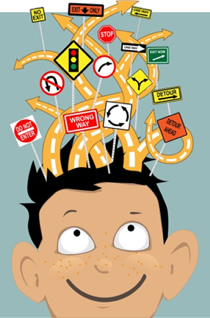Distraction: Definition and Examples
 What is a Distraction?
What is a Distraction?
Distractions take attention away from what an operator needs to do when performing a task. Distractions can be external (such as noise) or internal (such as fatigue, rumination, or stress).
Distractions may be caused by a number of factors, including the loss of interest in the primary activity, inability to pay attention due to various reasons, or intensity of the distractor.
Types of Distractions
Distractions can come in many forms. The following examples were taken from interviews with railroad engineers and conductors. The selection respresents the variety of factors that can pull attention away from what is important when operating a locomotive.
- Ambient noise (passengers, crew, equipment)
- Noisy equipment due to malfunction
- Active conversations with passengers and colleagues
- Information overload from displays
- Cell phone use (talking, texting, gaming, social media use)
- Mind wandering, rumination
- Physiological discomfort due to temperature, body positioning
- Fatigue due to shift work
- Lack of maintenance on equipment that is distracting (holes in equipment)
- Weather (rain in face)
- Looking for irrelevant objects in the environment (birds, animals)
- Automobiles and pedestrians
- Inability to focus due to personal stress
Source
- Nemeth, C., Papautsky, L., Grome, A. & Fallon, C. (2014). Computer-Based Training in Human-Systems Integration . Technical Report. Federal Railroad Administration. U.S. Department of Transportation. Washington, DC. 20590
